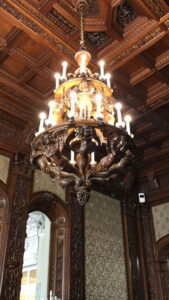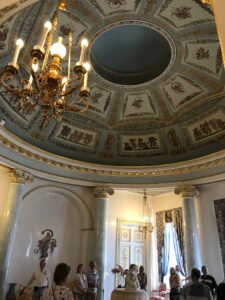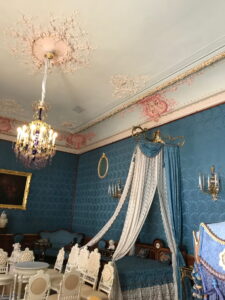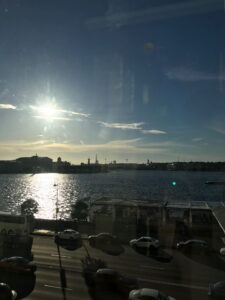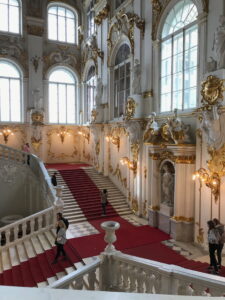The Menshikov Palace, on Vasilyevsky Island, is one of the oldest buildings in St. Petersburg’s history and a monument to the vision of the city’s founder, Peter I. Peter wanted the new capital and its citizens to reflect the best of European living standards, which culminated in a new architectural era in Russia. Palaces such as Menshikov’s, built by an Italian architect, could not be found anywhere else in the vastness of the former Russian Empire at the time of its construction. Today, the palace is a museum which transports the visitor to life in St. Petersburg during the early 1700s.
The palace appears, disappointingly, almost decrepit from the street level: it has not been painted in many years and the building materials look to be in disrepair. Once inside, there is an unpleasant lingering stench throughout most of the museum. The interiors of the lower level are historical exhibits about the founding of Petersburg and the role of Prince Menshikov in its founding and in the Great Northern War. The kitchen and dining room are preserved to this day, and one can see the difficulties of preparing and storing food during winter, in addition to the heating system. The lower floor does not offer much that is interesting or new, by way of history or exhibitions.
The upstairs of the palace is far more interesting, with rooms displaying various art collections and the earliest interior decoration styles of Petersburg’s elite. Similar to the Oak Dining Room at the Yusupov Palace, there is a room constructed from oak on the top floor of this palace (albeit much smaller). In fact, the rooms at the Menshikov palace are noteworthy for their relatively small size compared to the city’s other palaces. While at the Yusupov or Winter palaces one walks through “halls”, at the Menshikov they are truly “rooms”. In addition to the oak room, there is a beautiful “oriental” room in the palace. The walls are decorated with silk illustrations of Chinese folklore and everyday life, with an extensive collection of Chinese porcelain on display too. There is a small room on the top floor which houses Menshikov’s private art collection, which is almost entirely Dutch. The Prince also collected portraits of Russian and European monarchs which are on display in their own room and contain the likes of Peter, Catherine I, Peter II, and Louis XIV. One of the last rooms of the palace is the Grand Hall, which is still notably smaller than that of other Petersburg palaces but no less beautiful.
Prince Menshikov was Peter’s trusted advisor and one of his closest friends, perhaps the most powerful person in Russia after the emperor. His palace is a testament to the wealth and heightened living standards that Peter ambitiously sought to bring to Russians through his new city, the window on the West.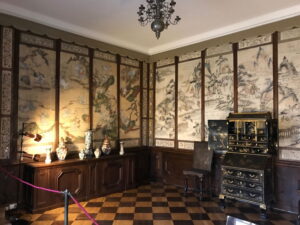
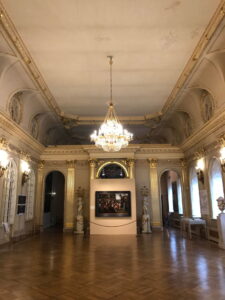
![]()







